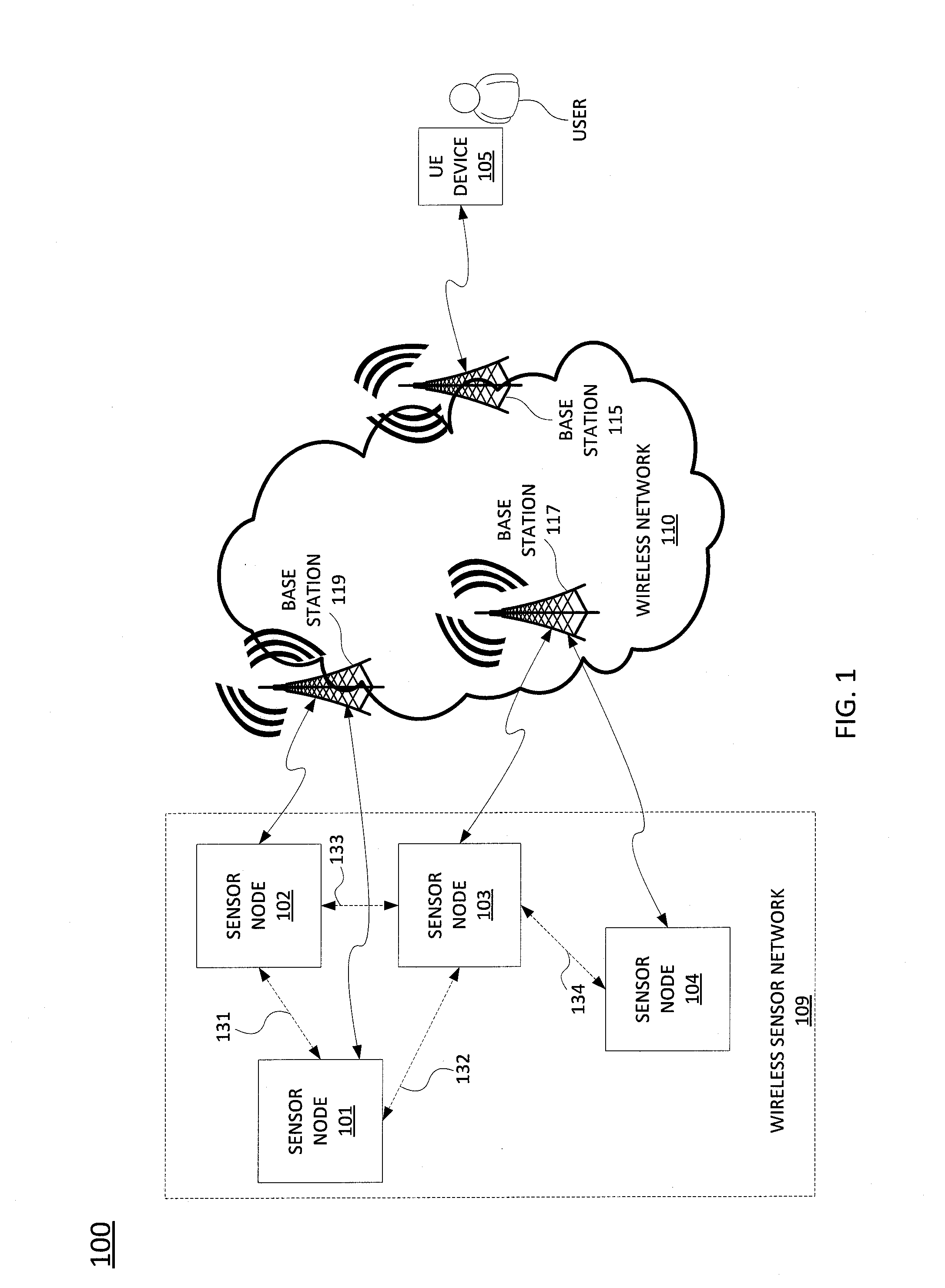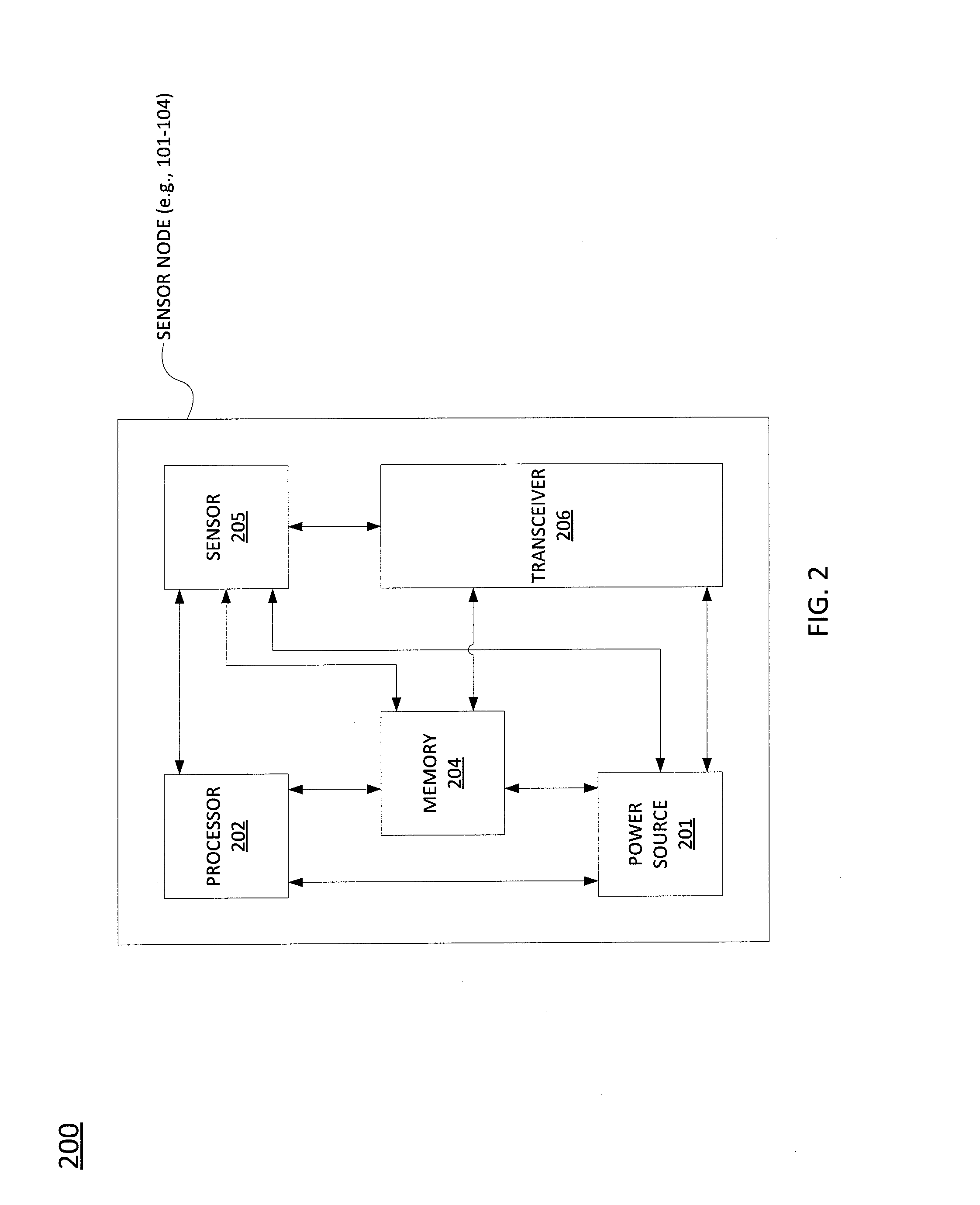Method and apparatus for reducing energy consumption of radio communications in a wireless sensor network
- Summary
- Abstract
- Description
- Claims
- Application Information
AI Technical Summary
Benefits of technology
Problems solved by technology
Method used
Image
Examples
Embodiment Construction
[0013]The present disclosure broadly describes a method and apparatus for transmitting and receiving of packets in a Wireless Sensor Network (WSN). Although the teachings of the present disclosure are discussed below in the context of a WSN network, the teaching is not so limited. Namely, the teachings of the present disclosure can be applied to other types of wireless networks that can benefit from the power reduction methods of the present disclosure.
[0014]Broadly defined, WSN is a network that comprises one or more sensor nodes or sensor devices (or simply sensors that are hardware devices) that are spatially distributed. For example, the WSN may be used for collecting and distributing data that is obtained by monitoring for physical or environmental conditions, such as temperature, motion, humidity, sound level, pressure, and so on, via the sensors.
[0015]In one embodiment, a sensor node may communicate with an end user through a base station that functions as a gateway. In anoth...
PUM
 Login to view more
Login to view more Abstract
Description
Claims
Application Information
 Login to view more
Login to view more - R&D Engineer
- R&D Manager
- IP Professional
- Industry Leading Data Capabilities
- Powerful AI technology
- Patent DNA Extraction
Browse by: Latest US Patents, China's latest patents, Technical Efficacy Thesaurus, Application Domain, Technology Topic.
© 2024 PatSnap. All rights reserved.Legal|Privacy policy|Modern Slavery Act Transparency Statement|Sitemap



